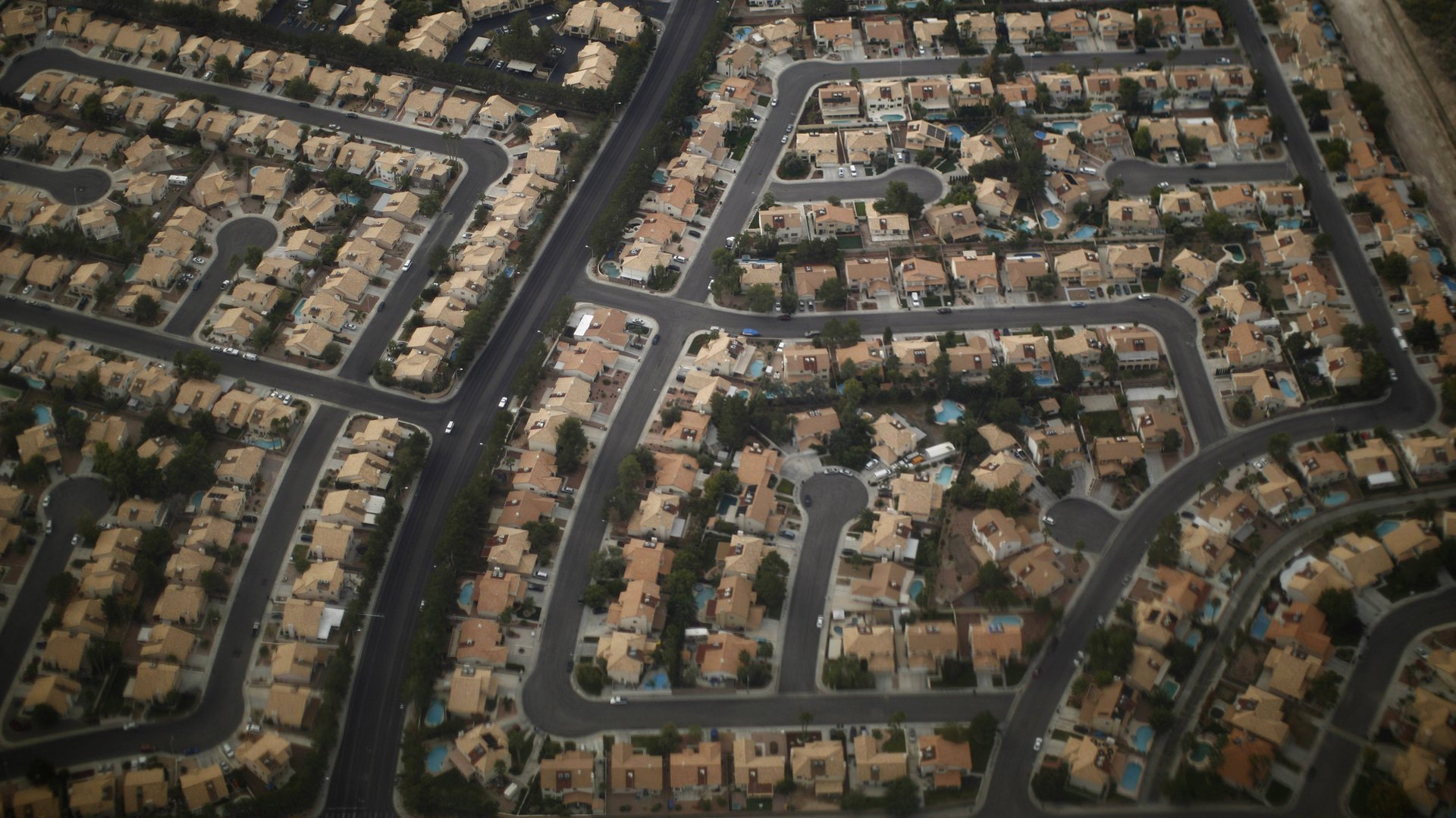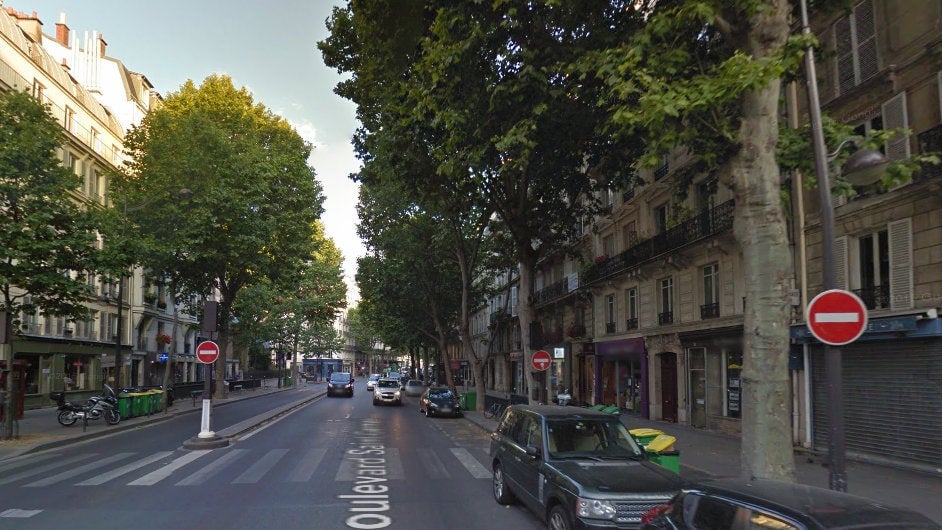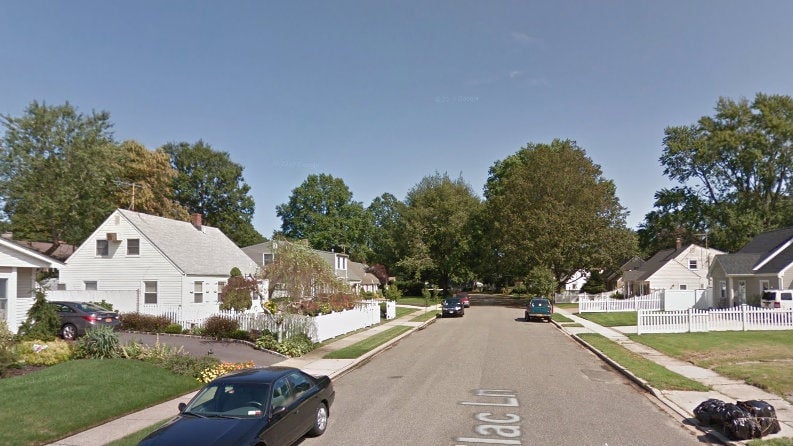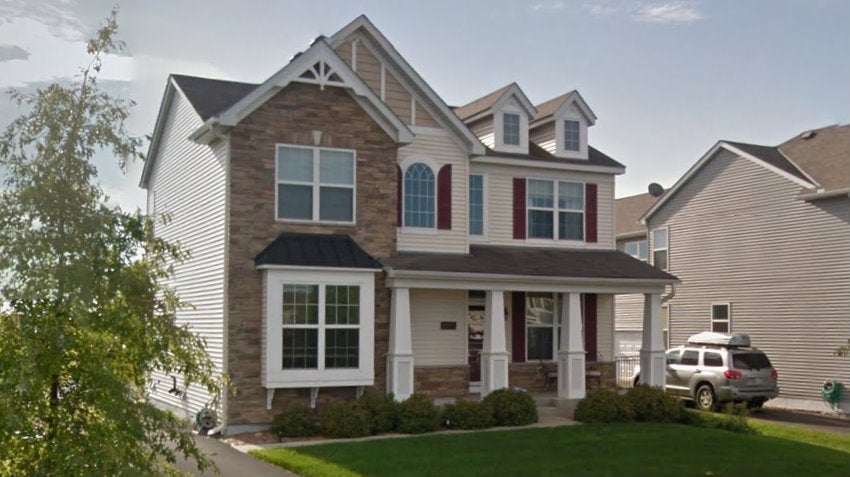Why even driving through suburbia is soul crushing
I’ve written some in the past about how the predominant suburban design in the US is among the worst features of life here—viewed from the perspective of a European immigrant like me, at any rate.


I’ve written some in the past about how the predominant suburban design in the US is among the worst features of life here—viewed from the perspective of a European immigrant like me, at any rate.
Far from posing a mere logistical or aesthetic problem, it shapes–or perhaps more accurately, it circumscribes–our experience of life and our social relationships in insidious ways. The destruction of the pedestrian public realm is not merely an economic or ecological absurdity; it has real deleterious effects. For just one small example of many: life in a subdivision cul-de-sac keeps children from exploring and becoming conversant with the wider world around them, because it tethers their social lives and activities to their busy parents’ willingness to drive them somewhere. There’s literally nowhere for them to go. The spontaneity of childhood in the courtyard, on the street, or in the square gives way to the managed, curated, prearranged “play-date.” Small wonder that kids retreat within the four walls of their house and lead increasingly electronic lives. (The virtues of a private backyard are easily exaggerated; it’s vacuous and isolated, and kids quickly outgrow it.)
However, it’s been difficult to elucidate in specific physical terms what it is about suburbia that makes it so hostile to humanity. To someone with no training in architecture, it’s often experienced as a great, non-articulated existential malaise, like depression. You know it sucks, but it’s hard to say exactly why. The same holds true in reverse; North Americans who have not travelled abroad extensively and don’t have a clear basis for comparison can be tongue-tied when asked to explain what exactly makes a non-sprawl city street “charming” or “cozy.” It’s telling that we have no widespread cultural vernacular for why classical urban settlements, which draw on millennia of intellectual background and corpuses of architectural knowledge, are pleasant. It’s because Americans took that inheritance and unceremoniously discarded it, consonantly with the rise of the mass-produced automobile. It irks me that many of us know, on some level, that we live in a dystopian nightmare but can’t say what makes it a dystopian nightmare.
That’s how I came to spend a fair amount of time recently thinking about and researching what exactly makes suburbia suburbia. I don’t mean the abstract reasons why it sucks; I’ve pontificated on that plenty. I mean the physicality. For example, I live in Atlanta, a suburban mega-agglomeration that sucks in the same general way as cities like Los Angeles, Dallas-Ft. Worth, Houston, and Phoenix. When someone asks me where I’m from, and I roll my eyes and diffidently groan, “Atlanta…” Why? It’s worth asking what specifically makes Atlanta “[groan] Atlanta.”
If one hopes to avoid broad vagueries like “Designed for cars, not humans,” and instead to get specific, then there’s no single linchpin attribute that makes suburbia what it is. It’s an interdependent constellation of misanthropic zoning rules, building codes, and planning guidelines. My aim is to list as many of these as I’ve discovered and been able to formulate.
1. Single-use zoning
American zoning law (in all but its oldest cities) forecloses on the possibility of mixed-use development. This means traditional design patterns like shops and offices on the first floor with apartments above are impossible. Residences are constructed in special areas zoned for residential construction, while shopping and work take place in altogether different areas zoned for commercial development.
The idea, of course, is that the peaceful slumber of the suburbanite should not be interrupted by the noise generated by the transaction of commerce or any other public-sphere human activities. The result is that running any errand or attending to any need, no matter how small, requires getting in one’s car and driving somewhere else, in many cases several miles or more.
Since separation of commercial and residential zones by vast tracts built at automobile scale (rather than human scale) removes the possibility of accessing useful destinations on foot, it removes any practical motive for walking. Without consequential destinations that are part of normal human activity, by and large, the only people who walk on suburban streets do so for exercise. And the only reason they would do that is because their automobile-powered daily existence does not otherwise compel much movement.
2. Hierarchical traffic distribution
The chief complaint of most residents of suburban sprawl is traffic. The most obvious cause is, of course, that everything requires driving, but there are more subtle reasons, too.
The endless cul-de-sacs, winding loops, and seas of parking lot in suburbia empty into larger “collector roads,” often constraining traffic in a given neighborhood to a single preordained path.
Traditional neighborhoods and cities are designed in a dense grid and/or interconnected web of streets, so there are many alternative paths between two points.
3. Set-backs from the street and parking ratios
Local building ordinances—ones that contribute to suburban sprawl—don’t allow buildings to directly abut the curb. That means one cannot simply enter a building from the street. Instead, the building is set back from the curb, requiring one to traverse a parking lot to reach it.
In the case of larger shopping centers, this means the building is set back several hundred feet, separated from the street by a large sea of parking. This is because suburban building ordinances require a generous proportion of parking spaces in relation to the surface area of the building. So, the larger the building, the more parking it must have, and, seemingly, it must be in front, not behind the building (more on that later).
4. Proximity does not mean pedestrian accessibility
On the other hand, it is not so uncommon in suburbia to live very close to a nearby shopping center. I’ve had lots of suburban friends tell me, “Actually, the grocery store is 1,000 ft from me. Very convenient.” Indeed, when we lived in an apartment complex in the Perimeter Mall area in Dunwoody, the nearby Walmart shopping strip was within spitting distance. I could almost see the store entrance from my bedroom window.
But, perversely, that doesn’t mean I could walk to the store, as a normal person from virtually anywhere else on the planet might conclude from that statement. In its fanatical quest to eviscerate the pedestrian realm and make cars exclusive first-class objects, suburbia manages to make far even that which is conceptually close. Building ordinances generally require some sort of “divider” between these adjacent land parcels, like a ditch, a chain-link fence, or a concrete wall or noise barrier. In our case, that means I had to walk out of the apartment complex, go around the divider, and then cross several hundred feet of parking lot to go to the store.
It goes without saying that most normal people would choose to drive the distance. And that’s the idea.
5. Economic segregation by building type
It does not bear repeating here that one of the things that makes interesting places interesting is variety. However, one more subtle effect of the enforced homogeneity of suburban residential neighborhoods is economic segregation.
In older and more traditional neighborhoods, multiple types of buildings of varying sizes coexist closely. Yes, it is a universal premise of building regulation and planning that they must be united by some sort of overarching organizing aesthetic principle and geometrically agree in some way or another, but that doesn’t mean they all have to be approximately one type or size. As a result, it’s quite possible for poor, middle class, and rich people to live side-by-side in one neighborhood, with the difference being that the rich people’s houses or apartments are merely bigger.
Local building ordinances in suburbia aggressively disallow this, and integrating more affordable housing is the fastest way to tank property values within the logic of the suburban system. That’s why every new subdivision contains only a handful of approximately similar house types, and the residents are all in a similar income bracket.
Suburban building codes also commonly disallow affordable housing hacks available in older neighborhoods, such as above-garage apartments (sometimes known as granny flats). It is no mean feat to get approval for a small secondary edifice in one’s backyard–something the size of a toolshed, but habitable. Contrary to the individualist-libertarian ideology underpinning widespread suburban attitudes, even use of the space behind one’s walls, within the private sphere, is highly constrained and regulated.
6. No street enclosure and definition
The geometry of streets and sidewalks is a critical topic. Generally speaking, the reason settled streets in older neighborhoods and European cities feel “cozy” and “charming” is because they provide a feeling of enclosure, which humans want because it gives them with a coherent sense of place, like rooms in a house.
I’m not a sociobiologist and cannot say exactly why this is, but would speculate that it caters to people’s primal need for shelter and clear directional orientation. Whatever the case, it’s an established fact that people gravitate toward places that have clear borders and relatively comprehensive enclosures; it’s a kind of axiom for the discipline of architecture. People feel vulnerable and uncomfortable in open areas with ill-defined margins.
That’s the difference between standing on Saint-Germain:

And standing in the middle of nowhere:

Creating that enclosure and definition cannot happen if buildings are sparse and set back from the street. It also requires a certain broadly rectangular building geometry, with more right angles and less campy avant garde twists (more on that later). Suburban streets are notable for the degree to which they don’t provide a sense of place. Their curved, winding trajectory also robs one of a sense of cardinal direction–that’s why it’s so easy to get lost in suburbia. I am much more likely to need GPS aid in navigating through a subdivision than through a downtown.
Pleasant, walkable streets have other important features, such as protection of the pedestrian sphere from automobile traffic. This delineation is provided by architectural buffers such as trees, high curbs, and street-parked automobiles themselves. All of these things can arrest a car about to plough into a crowd.
Another thing that takes away from the feeling of place and enclosure is large curb radii. You’ll notice that in dense cities and older neighborhoods, sidewalks adhere to the street at right angles, providing a minimal crossing distance for the pedestrian. However, suburban curbs are optimized for cars, allowing them to maintain some speed while turning right—and easily mow down anyone who is misled by the formal presence of a crosswalk into believing that they’re actually meant to walk there.
7. Useless, ugly, and wasted space
When quizzed about the advantages of suburban life, the most common answer is “space.” But even if you like lots of space, you’d have to agree that the quality depends on what kind of space it is.
Suburban development ordinances are replete with requirements for useless frontages, pointless greenspace between compatible land uses, as well as chain-link fences, concrete barriers, and drainage pits. Space is still inhabited by humans, and has to be articulated to match their specific uses for it. A lot of open space in suburbia lacks that articulation; it’s neither pristine forest nor a particularly usable surface. It’s just kind of there.
The absurdly large width requirements for inner residential streets are a special case of their own. Small, low-density streets don’t need to be so wide that one almost can’t see his opposite neighbor’s house because of the intervening curvature of the Earth, especially given that street parking is generally not done in these places because, evidently, everyone needs their very own [expensively and unnecessarily] paved driveway. The formal reason for large width requirements is generally something comical, like to accommodate a full-size fire engine or other large emergency vehicle in case tragedy should strike. Well, sure, conceivably you might need to land an A380 there, too.
8. Parking-first aesthetics, garage façades, no alleys, no interior yards
It took me some time to consciously realize it, but one of the biggest differences that makes traditional neighborhoods more appealing is that parking typically happens behind the house, reached through an alley. One is not likely to see an alley approved in suburban construction; that’s where robbery happens, right?
Instead, suburban houses are set back to make room for a driveway. Much of the façade of many houses is accounted for by a garage. This telegraphs the impression that the primary function of a house is really, above all else, to provide parking for one’s car.
Considering that suburbia is reputedly sterile and safe, there ought to be many other uses for alleys and common interior courtyards located at the rear of buildings, away from the street. In addition to being the proper place for cars, those are good places to put trash and recycling bins. Instead, the suburban street is surreally dotted with plastic trash cans at least weekly. So much for the pretense of civilization.
What this says is: we have such a dilapidated and depressing public realm, so few memorable places and things worth seeing, that we truly don’t care. This tension also accounts for the kitschy, farcical schizophrenia of the suburban home façade:

It’s a castle, a veritable homage to colonnades! But wait, there’s more: there’s a front porch–and if you’re a toddler, you can fit on it! Seriously, what is this thing? It looks like it’s trying to be a lot of different things from the annals of written history.
It’s not a house. At best, it’s awkward and unsettled eclecticism, and at worst, it’s a caricature, as Kunstler would say. The form of normal houses much more closely follows their function. The problem is, when there’s nothing else worth looking at, developers are vulnerable to being charged with having built too-“sterile” of suburbs—if they build a merely functional house, the sort of thing that would be thought attractive for its simplicity and cohesion elsewhere on the globe, they have failed. And that’s how we get to the neurotic potpourri of superficial ornamentation above.
The same dialectic is often a driver of the infamous suburban NIMBYism. When the public realm is so depressing and demoralizing, describable mainly in terms of the car traffic it generates, it’s understandable that nobody would want to see more of the same built nearby. It ultimately comes down to the fact that we don’t value our public realm in America, and, no surprise, we’ve not built a public realm worth valuing but instead retreated into escapism in the private one. All escapists, ranging from readers of fantasy literature to video game players to drug addicts, are generally irritated by any effort to somehow disrupt or meddle with the ongoing process of their withdrawal from reality.
9. No street life or visible human activity
Periodically, people will ask me: “Well, if you’re so committed to walking, why not just … do it?” They mean right here, on the highway, next to six lanes of traffic, in 90 °F heat.
Well, in actually-existing psychological reality, people aren’t going to walk where it’s neither comfortable nor interesting to walk. Contrary to popular Republican-type mockery of the notion, “interesting” doesn’t require a hipster paradise of airy-fairy, frou-frou creature comforts like street cafes (though they do uncannily arise in interesting places). “Interesting” just means there’s some intimation of human presence and activity expressed in the architecture and scenery.
There’s nothing about a treeless six-lane highway that conveys this. I’m going to drive, not walk, because to walk would be boring, tedious, uncomfortable, dangerous, and, in a sprawling geography designed at automobile scale, impractically slow.
10. No public transport
Aside from its superior efficiency and ecological footprint, the primary value of public transport is not in being able to commune with the armpits of your fellow man, but in being able to spend your time in some way other than chained to one’s steering wheel cursing the traffic. You can read a book, catch up on e-mail, or just close your eyes for a while.
In suburban sprawl, you’re doomed to spend vast amounts of time at the wheel—time you cannot do much else with, and which you won’t get back. The nature of low-density automobile sprawl cities is that everything is insanely far away from everything else, so no matter what you do, you’re doomed to driving vast distances to see most friends, to commute to work, and so on.
Clearly, it bears mention at this point that self-driving cars could address the chained-to-the-steering-wheel factor. But it remains to be seen to what extent they can shift the larger paradigm. I can envisage self-driving cars doing very little to change the overall blight (and environmental costs) of suburbia, or I could see them evolving more rationally into a kind of semi-personalized public transit. It’s a phenomenon that has the theoretical potential to either greatly further our atomization into the pathetically sybaritic techno-pods of a WALL-E type world, or to turn into a moderately pleasant band-aid.
Whatever the case, they don’t solve the more fundamental problem of our vicious contempt for the idea of a public realm.
11. Improper interface between city and highway
In most places in the world, one will find that high-speed highways run between cities, not through them. You’ll also find that intercity highways don’t have a lot of commercial development along them, allowing unadulterated views of the countryside.
In places like Atlanta, interstate highways are something like main thoroughfares. Three of them converge downtown, along with numerous other high-speed roadways.
The effect is to induce lots of derivative traffic within the city. Freeways breed on-ramps and car-centric development along the corridor. At the same time, the city, especially its most important historic parts, is partitioned by an ugly exoskeleton.
12. Lack of regional planning vision
Turning back to Atlanta: Decades of unbridled free-for-all building in Atlanta have led to a widely dissonant, fragmented patchwork that cannot deliver a coherent thesis for future development in the city.
Some individual neighborhoods in Atlanta, like Midtown (where I live), have made great strides over time to become walkable and present viable in-city living options. The problem is, as soon as you need to leave such a neighborhood, you still have to get in your car.
The same problem can even play out on the block level. I’ve been to some downtowns of suburban sprawl cities and found them to have a number of blocks or sectors that are actually quite pedestrian-friendly, well-designed, and interesting. The problem is, these blocks are like a chessboard; they’re not contiguous! Want to go more than 500 ft? Better start the car.
The point is, Metro Atlanta covers nine counties and untold municipalities, incorporated and not. With all the resources and initiative in the world, there’s nothing the City of Atlanta can fundamentally do to alter the reality of life in 95% of Metro Atlanta. I haven’t seen anything inhabitable constructed in America through a laissez-faire approach to building across such a patchwork. Charge has to be taken at the regional level.
As far as I can tell, the same holds true almost everywhere, since everything in the US that is—gallingly—called a “city” consists of fragments scattered across unconscionable stretches of freeway. I have a special place in my heart for Dallas-Ft. Worth, much of which should be reclassified as a rural area outright if one is to judge by density. But the need for a regional approach to development priorities and transportation probably applies almost everywhere, including places like St. Louis, Indianapolis, and Omaha.
This post originally appeared at Likewise A Blog. This post draws in part upon the work of James Howard Kunstler, including his widely disseminated TED talk, as well as upon the data and ideas in the well-known New Urbanist title Suburban Nation by Andres Duany, Elizabeth Plater-Zyberk, and Jeff Speck.